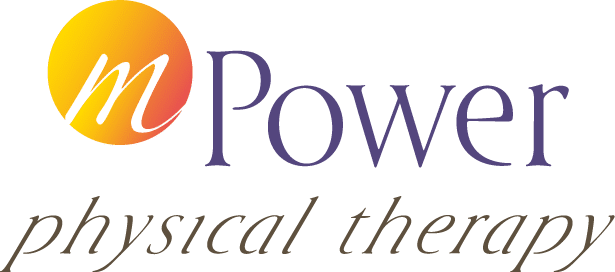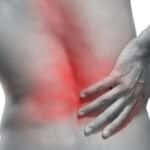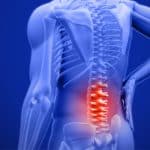Headaches: the dreaded pulsating, pounding, aching sensation in your head that impacts everything from concentration to quality of life. For 40-50% of the population, headaches are a common occurrence experienced by individuals of all ages and backgrounds.1 But have you ever considered that your headaches may actually be stemming from your neck and shoulders? Follow along as we uncover the interconnectedness of the region and implications for headache management.
Understanding Headache Triggers
Headaches can be caused by a wide range of triggers ranging from alcohol and nicotine to overexertion to poor posture. For some they can be an indication of an underlying medical issue and for others they can be completely benign with no identifiable cause.
When patients present to mPower Physical Therapy with headaches here in Dallas, TX, a comprehensive assessment is performed to pinpoint any identifiable causes of the headaches, address modifiable factors and educate the client on self-management strategies. Our aim? …To minimize the intensity and frequency of the pain and give you strategies for swift relief.
Connecting the Dots
As physical therapists, we are experts in the musculoskeletal system, constantly doing investigative work to connect the dots between symptoms and cause. When it comes to headaches, neck and shoulder dysfunction is one of the most common culprits leading to tension headaches. As a patient dealing with headaches this can be a tough concept to grasp as most would assume that their issue is lying just below the surface of their pain.
However, like many conditions we treat, the site of dysfunction is more often not the same as the site of pain. Between myofascial trigger points, poor posture and sedentary work, issues at the neck and shoulders are a hotbed for headache development.
How Muscle “Knots” Cause Headaches
Sometimes termed a “knot”, a trigger point is a fancy way to describe an area of contracted tissue in a muscle. Now realize, the tissue isn’t actually knotted, it’s simply stuck shortened, leading to reduced blood flow to the area and the build-up of pain products in the local tissues.
Trigger points in the neck and shoulders very commonly refer pain to the head with each muscle having an established referred pain pattern. Take the upper trapezius for example. This muscle connects our neck to our shoulder and is one of the most common sites that people hold tension when they’re stressed. Press on this muscle and you may feel discomfort locally but you can also often feel it radiating to the backside of your neck, jaw and even into your temple.
Trigger points can be addressed in a variety of ways ranging from massage to dry needling to cupping techniques. Regardless of the treatment strategy, the goal remains the same- to reduce the muscle tightness and determine what caused that tightness in the first place.
Poor Posture, Poor Outcomes
You’re probably tired of hearing about your posture, but poor posture has also been found to be a significant contributor to neck and shoulder pain as well as headache development. Sit at a computer all day? Seeing your screen time ticking up into the 3+ hours mark? Between inactivity at work, poor alignment both sitting and standing, and hunching over a cellphone, joint tightness and imbalances develop which can ultimately lead to muscle tissue protection and the triggering of headaches.
Headache Hacks
The science is great and all but I’m sure you are wondering what can you ACTUALLY do to minimize neck tension and associated headache occurrence? Here’s our top 5 tips to master headache management:
- Improve your posture: Be mindful of your alignment throughout the day whether sitting, walking or standing. Keep your shoulders and neck as relaxed as possible, sit up straight when you can and focus on keeping your head aligned with your spine.
- Stress management: Stress is one of the quickest ways to trigger muscle contraction and headache development. Find healthy ways to manage your stress like meditation, exercise or deep breathing and incorporate it as needed on a frequent basis.
- Set up your workstation for success: Sedentary work is taking over America and if you are spending 8-10 hours a day at your desk, it better be set up correctly! For those with limited resources, a simple google search of “ergonomic workstation” can provide great advice on how to optimize your workstation and improve your alignment. If resources are plentiful, consider investing in an adjustable chair or standing desk and ask your employer about opportunities for ergonomic assessments.
- Exercise: Movement is medicine and holds true for many headache sufferers as well. Focus on stretching your neck and shoulder muscles that inevitably get shortened throughout the day and strengthen your back muscles to maximize your muscle endurance and postural alignment.
- Seek professional help: If neck and shoulder tension or headaches are affecting your quality of life, consider seeking treatment by a licensed professional like a physical therapist. Physical therapy for headaches can be extremely beneficial providing sufferers personalized treatment plans to alleviate symptoms and address underlying issues. Common areas not addressed are upper joint mobility and first rib mobility. Manual work from a skilled physical therapist can be life changing.
Relief Begins Today.
It’s time to tackle your headache woes with precision. Join us at mPower Physical Therapy as we address your issues head on and give you the tools you need to get the relief you deserve.
Ready to learn more? Contact us online or give us a call at (214) 538-2559 to set up your free 30-minute headache pain assessment and uncover what pain free living feels like.
References:







